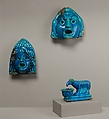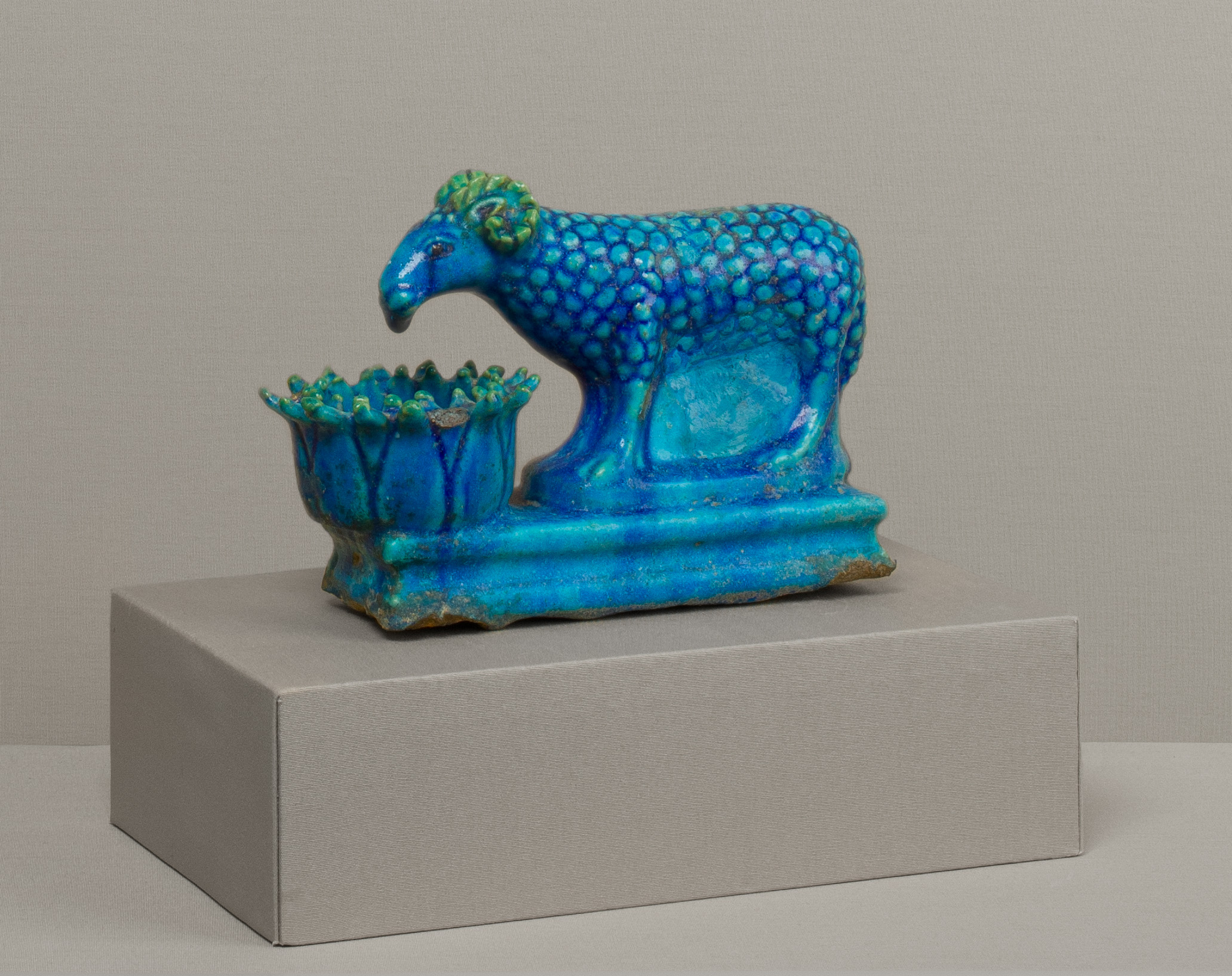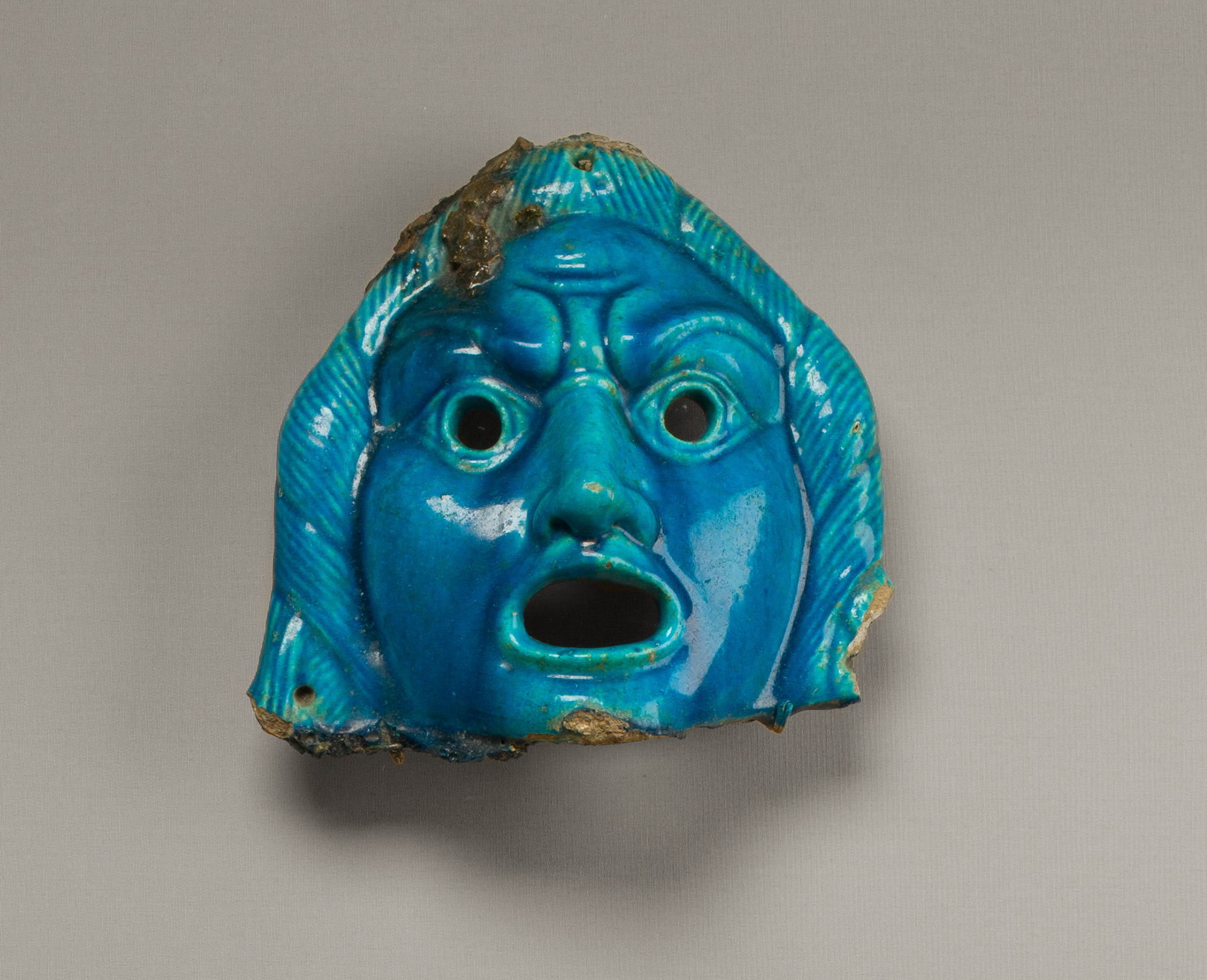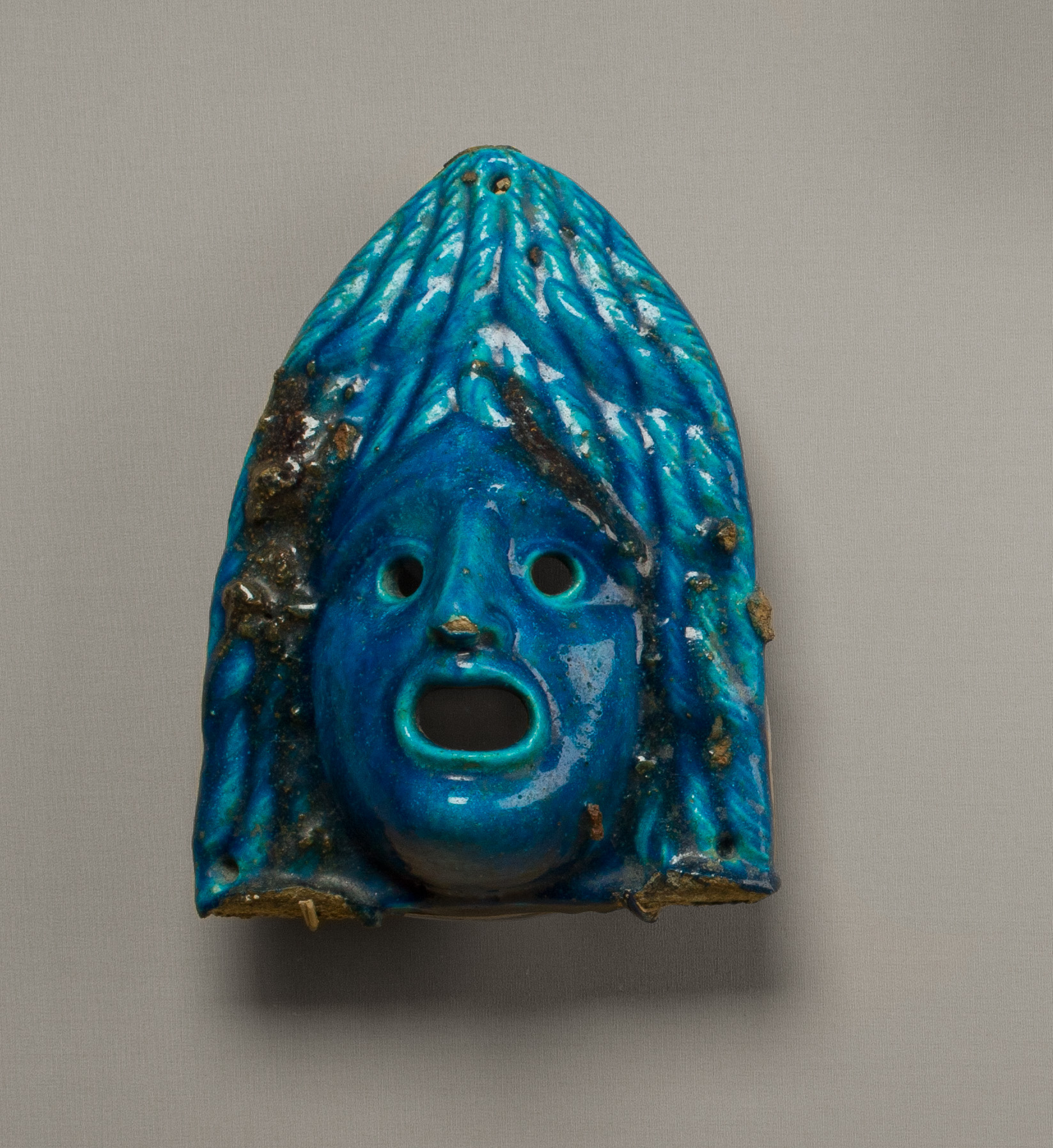Theatrical Masks and Ram Vessel for Offering
Roman Period
These three pieces are said to have been part of a find of numerous faience objects at Arsinoe, capital of the Fayum region.
The masks are too small and brittle to have served as actual theater masks. They refer to the god Dionysus, patron of the theater and god of rebirth; in Egypt he was equated with Osiris. Terracotta theater masks are found in burials and sanctuaries in Greece, in sanctuaries and as garden decorations in Italy. In Egypt, they are known only from burials, as offerings to Osiris/Dionysus. Terracotta masks from Antinoopolis in Middle Egypt probably originate in tombs, and a terracotta theater mask was found in a Roman Period chapel over a burial at Hawara.
The charming ram in the second view, with its almost prehensile muzzle, feeds from a lotus-form trough. The traditional Egyptian gods Amun or Khnum were identified with curly-horned rams, but by this time several other divinities were as well. In terracotta statuettes and on coins Harpokrates can be seen riding a ram or sitting upon a lotus flower, the latter symbolic of rebirth. Perhaps this faience composition alludes to Harpokrates, who was an immensely popular god of fecundity and rebirth during the Roman era.
Due to rights restrictions, this image cannot be enlarged, viewed at full screen, or downloaded.
This artwork is meant to be viewed from right to left. Scroll left to view more.





